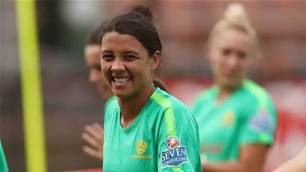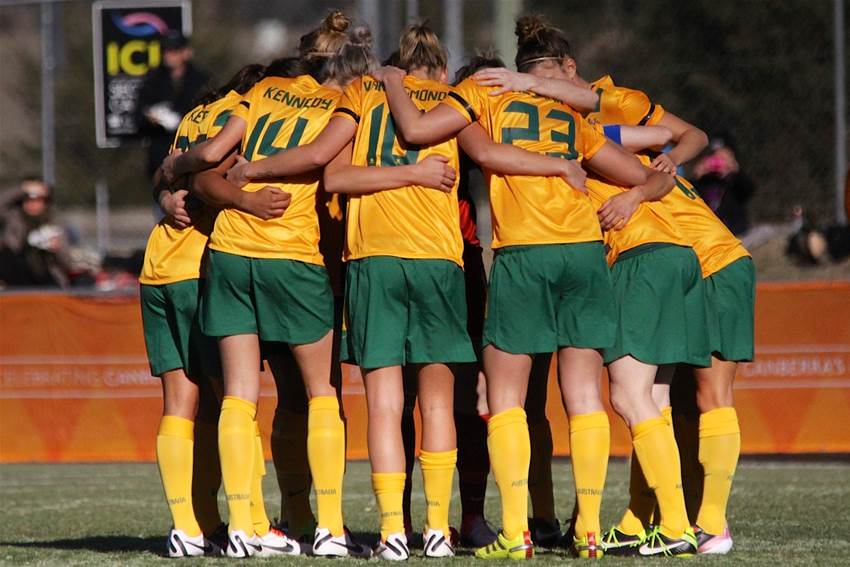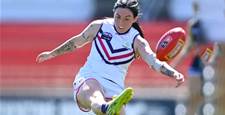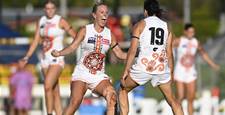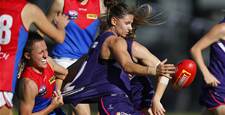The streak is retained but after nine months of no play and several changes, including a new coach, the two game series with New Zealand highlighted just how far the Kiwis have come, and how much more Australia needs to work on.
The streak is retained but after nine months of no play and several changes, including a new coach, the two game series with New Zealand highlighted just how far the Kiwis have come, and how much more Australia needs to work on.
1. Change doesn’t happen in a couple of months
Okay Matildas fans, listen close as there is something you need to know.
Prepare yourselves because systematic change doesn’t happen in a couple of months. And make no mistake, that is what is occurring at the moment with the national team.
Australia was lucky to have stability at the top for the years Tom Sermanni was the head coach but now it's different. Hesterine de Reus is different and what she is attempting to do with the team is different. As was written the other day, it’s an amended system (two holding midfielders), the defensive philosophy is different and personnel have been deployed in different positions. I think you got that's different.
The upshot is it will take some time, several games, a little frustration and maybe even some pain for all of this to come together.
2. Possession is nine-tenths of the law
Although in saying stating point 1 above, it has been a long time since Australia has lost the possession count. In the last couple of years, we have become accustomed to have the lions share of possession. Even in the Matildas defeats last year, the team had the better of that particular statistic.
Most noticeable is what the team did, or in this case didn’t do, with the ball once they had it. As on Thursday night, they found it hard to keep the ball and it would be interesting to see the ‘completed passes’ statistics.
Speed of ball movement, movement off the ball, second and third options for the ball carrier, close ball control; all of those were off and in turn so were the team when it came to our usual combinations and patterns of play.
While possession is not everything, the cold hard facts are its difficult to create goal scoring chances (and ultimately score goals) without the ball.
3. What’s the goal?
Which leads to point three; goal scoring opportunities. We didn’t have many.
Despite the fact that the Matildas had 8 shots on goal and 24 balls in the penalty area, there was a dearth of honest to goodness goal scoring opportunities. The couple that they did have, Polkinghorne’s header, Sam Kerr’s volley and Elise Kellond-Knight at the death, were either converted or went close to converting.
 Brianna Davey is growing in stature | TWG
Brianna Davey is growing in stature | TWGThe statistics also say something about the build up play. Eight shots, 24 balls in the penalty area and only 44% time in the opposition half indicates more direct play and less construction of the play.
What was also evident was that once the wing options of Kerr and Kellond-Knight were shut down in the second half, we found it difficult to play the ball through the central corridor and unlock New Zealand centrally.
When appointed Hesterine de Reus expressed that the defensive structures would be the first concern before turning attention to the attack.
"We also need to improve our attacking, especially in the box so hopefully when we play a club team we will be able to reach the box a lot time and do a lot of finishing.”
Australia will be playing a club side Ado den Haag in the Netherlands for this express purpose.
It must also be noted that three of our top attacking talent, Kate Gill, Lisa de Vanna and Kyah Simon, were not present. Between them they have 200 games and 70 goals experience.
4. The light
Okay, okay, it wasn't all doom and gloom but those first three points were important and, as the national team gains more attention and looks to progress to the top tier of football, analysis of performances are crucial.
Now we can turn our attention to what did work because there were a number of pleasing aspects.
Some of the positional changes look to be working well, in particular the move of co-captain Clare Polkinghorne to centre back. It is a position not too unfamiliar to Polkinghorne having played there for Brisbane Roar a number of seasons ago. As stated in the Game 1 lessons, she looks a natural there.
The left side with Stephanie Catley and Kellond-Knight also looks promising. With Catley rising as she did last year in KK’s absence, the question was how would Australia accommodate the 2012 U20 Player of the Year and the 2011 FIFA WWC All-Star. Luckily, it’s not our job to solve those questions and de Reus' solution is to move KK upfield.
This works on two levels. Firstly, Catley can continue to develop in that left back position and we can have excellent cover in that position. Secondly, if Catley or KK decide to go marauding up the pitch, as former attackers are inclined to do, they can do so sound in the knowledge that they have some-one who can cover for them well in the event of a counter attack by the opposition.
Finally, a word on the goalkeeping. Australia has a fine tradition of producing world-class goalkeepers in the men’s and women’s game.
While she can’t be added to the list quite yet, the progression of Brianna Davey in the last two years has been exceptional in all areas of her game. She has the number 1 on her back and its going to be up to the others to wrest that shirt off her whether they are Lydia Williams, Melissa Barbieri, MacKenzie Arnold or Sham Khamis.
 NZ are stepping up their challenge to Australia | TWG
NZ are stepping up their challenge to Australia | TWG5. New Zealand ARE a good side
We don’t normally make mention of other sides but the improvement of our southern neighbours bears noting.
In the last 12 months the Kiwis have developed into a good side. This has been rewarded in them obtaining their highest FIFA ranking of 20.
Defensively W-League regulars Abby Erceg (Adelaide United), who captained the side and was deservedly Player of the Match, Rebekah Stott (Melbourne Victory) and Annalie Longo (Sydney FC) were excellent. Confident with crisp passing, New Zealand controlled the ball and the proceedings as Ria Percival or Ali Riley time and again connected with the intelligent runs of the dangerous Sarah Gregorious or Hannah Wilkinson.
Tony Readings must be credited for building on the work John Herdman started with the Football Ferns. In the last 3 years they have gained their first World Cup points, scored against the US (yes that is an accomplishment), advanced from the group stage and reached the quarterfinals of the 2012 London Olympics, medalled in the Cyprus Cup; this squad is one to watch in the coming years.
If they continue on this trajectory, their defeat of Australia is realistically only a matter of time. Then this rivalry will really heat up.
Final thoughts
What the NZ series has once again displayed is, and it may sound like a broken record about this, that quality internationals are crucial. De Reus states 8 (at a minimum) to 12 are required and as the Matildas came into our first international of the year (in June!) NZ had already played four. And it showed.
Time and matches. That’s what Australia needs and the good news is they have number of internationals coming up on the European tour with de Reus mentioning another two game series with China later in the year.
Related Articles
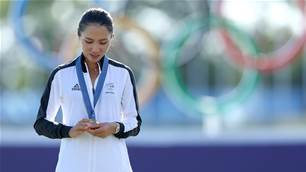
Ko proud of her climb back to the top after self-doubt

Arsenal edge A-League Women in friendly match
